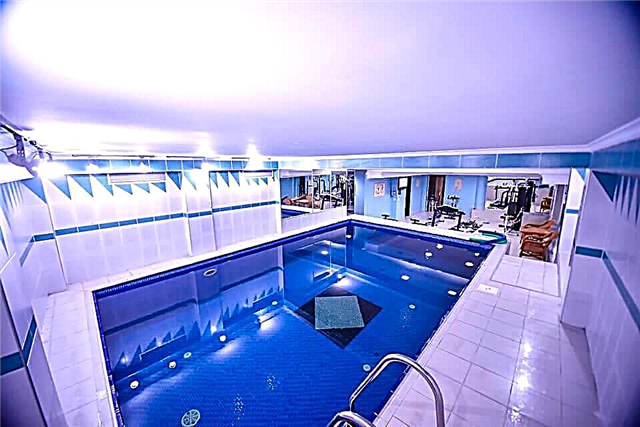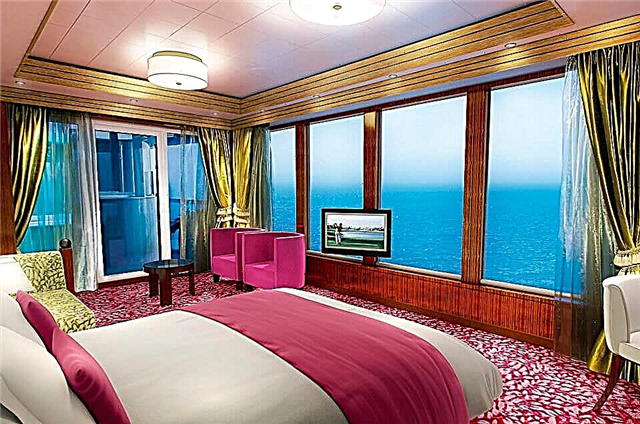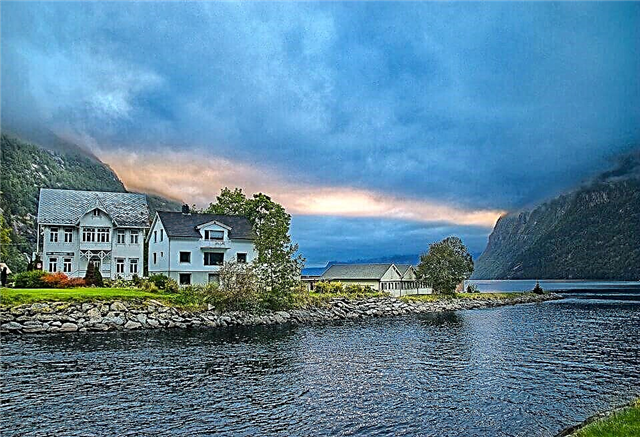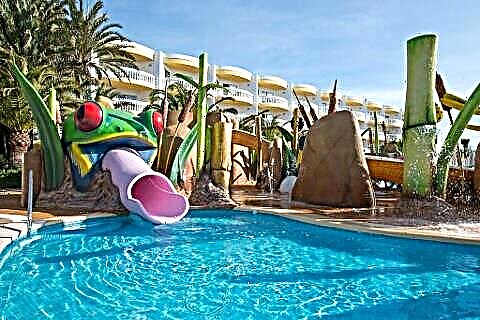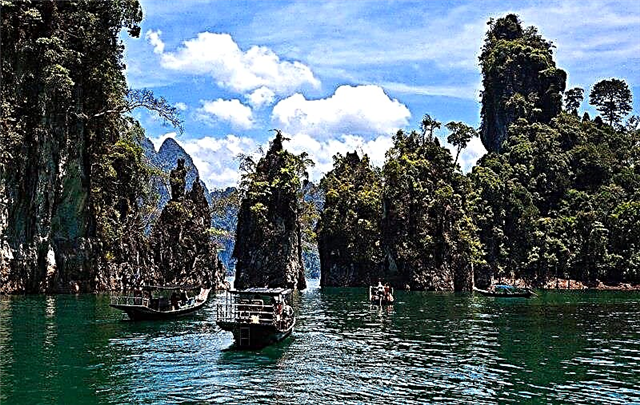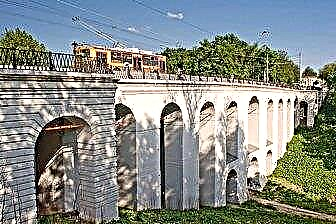Kaluga ranks among the most attractive and promising tourist destinations in Central Russia. This is an interesting city with many churches of the 17th-18th centuries, city noble mansions, former merchants' chambers converted into museums, and a charming home atmosphere.
Kaluga is the birthplace of Russian cosmonautics, the famous Konstantin Tsiolkovsky lived and worked here. His name is immortalized in the names of many city objects. Tourists will undoubtedly be interested in the exciting expositions of the Museum of the History of Cosmonautics, as well as the collection of the memorial house-museum of the scientist. Event and ecotourism is well developed in the Kaluga Region. People flock here to participate in holidays, festivals and to relax in the bosom of nature.

The best hotels and hotels at affordable prices.
from 500 rubles / day
What to see and where to go in Kaluga?
The most interesting and beautiful places for walking. Photos and a short description.
Museum of the History of Cosmonautics named after K.E. Tsiolkovsky
The largest museum on the territory of our country (according to some sources - all over the world), dedicated to the issues of space exploration. The museum was organized in 1967 with the direct participation of the first cosmonaut Yuri Gagarin and the greatest scientist S. Korolev. Among the famous exhibits are a mock-up of the main module of the Mir orbital station, genuine parts of the Vostok spacecraft, and a collection of rocket engines.

A stone bridge
The construction of the end of the 18th century, the largest viaduct in Russia. It was built according to the project of P. Nikitin in the style of Russian classicism. Until the 19th century, trading shops were located on the surface. The bridge is 100 meters long and 23 meters high. The structure consists of 15 arches. The viaduct has always served as a busy transport artery; in 2010, a complete reconstruction of a somewhat dilapidated building was carried out.

Official places
Public places is a collective name for a group of buildings from the late 18th - early 19th centuries located in the administrative center of the city. The structures were erected by order of the governor M. Krechetnikov. Architect P. Nikitin worked on the project. The individual buildings of the complex are connected to each other by arched ceilings. The architectural ensemble of the Public Places looks rather sumptuous compared to the more relaxed style of the surrounding buildings.

Gostiny Dvor
Another creation of Pyotr Nikitin, who worked hard on the architectural appearance of Kaluga. The construction of the Seating Rows was carried out in the period 1784 - 1823. in a classical style with decorative elements of old Russian architecture. Gostiny Dvor is one of the most picturesque sights of the city; N. Gogol loved to visit here. The complex has the status of a monument of federal significance.

Kirova street
The central street of Kaluga, where the main attractions are concentrated and picturesque historical buildings of the past centuries are located. The former mansions are now occupied by offices, shops, administrative offices, restaurants, galleries. Earlier, during the heyday of the merchants, this street was called Sennaya, as carts laden with hay passed along it in the direction of the square.

Kaluga Regional Drama Theater
The city theater of Kaluga was founded in 1777. The stage was established thanks to the governor of the city M. Krechetnikov, who was a great admirer of art. At first, performances were given in a former hangar; an independent building appeared in the 1920s. XIX century. The first building was completely burnt down, the next, built in 1843, was also destroyed by fire, and the third building came under bombardment in 1941. The building of 1958 has survived to this day.

Kaluga Regional Museum of Local Lore
The museum was opened at the end of the 19th century in the Korobov merchants' chambers of commerce. This building belongs to the architectural monuments of the 17th century. In the early years, he worked only two days a week, and there were few exhibits in the collection. In 1922, the estate of Zolotarev was transferred to the jurisdiction of the museum. This is a picturesque mansion with well-preserved architectural details of the past centuries, wrought iron gates and classic bas-reliefs.

Kaluga Museum of Fine Arts
The museum is the same age as the 1917 October Revolution. In 2014, the Kaluga Regional Art Museum was merged with the Obraz Gallery, thus creating a modern collection. The collection is housed in a 19th century city estate built in the Empire style. Previously, the mansion belonged to the Bilibin-Chistokletov family. The exposition is based on the private collection of a local doctor - patron of the arts I. Vasiliev.

House-Museum of K. Tsiolkovsky
The house in which the outstanding Russian scientist and space explorer K. Tsiolkovsky lived for 29 years. Many of his works on aviation, properties of jet propulsion and astronautics were written here. Konstantin Eduardovich purchased this house in 1904. A year after the death of the scientist, a memorial museum was opened on the territory of the building. The exposition is designed to acquaint visitors with the invaluable heritage of K. Tsiolkovsky.

House-Museum of A. L. Chizhevsky
The museum was opened in 2010. on the territory of the house where the Chizhevsky family previously lived. One of its representatives, A. Chizhevsky, was a prominent biophysicist. During his life in Kaluga he wrote many fundamental works. The building is located on Moskovskaya street. It looks like an ordinary, unremarkable mansion, consisting of two floors. Before the opening of the museum, various organizations were located on its territory.

House of Masters
A small club-museum located in a wooden house from the middle of the 19th century. For several years the building was owned by the princely Volkonsky family. At the beginning of the 20th century, the mansion was rebuilt by the new owners, and carved decorative elements were also added. The museum was opened in 1990 after the restoration of the building. The exposition consists of items of folk crafts and arts and crafts.

Chambers of merchants Korobovs
One of the main attractions of Kaluga, a picturesque example of architecture stylized as old Russian architecture. The building dates back to the 17th century. The first owner of the building was the landowner, merchant K. Korobov. The construction was transferred to the state at the end of the 19th century, at the same time the Historical Museum was opened on its territory. The chambers became part of the Museum of Local Lore in 1997.

Cathedral of the Life-Giving Trinity
At the beginning of the 17th century, stone churches were practically not built in the Russian state, therefore the first church in honor of the Life-Giving Trinity was erected from wood. Next to the entrance to the temple was the grave of False Dmitry II. At the end of the 17th century, the construction of a stone cathedral began on the site of a dilapidated building. The modern building that has survived to this day dates back to 1819.

Church of Cosmas and Damian
An elegant five-domed church built in 1794, built according to the project of one of the students of the master V. Rastrelli. The outer walls of the building are decorated with mosaics depicting the deeds of George the Victorious and Nicholas the Wonderworker. Until 1917, the Church of Cosmas and Damian was considered the richest church in Kaluga, but during the Soviet era, the building was badly dilapidated. In 1992, she was returned to the Russian Orthodox Church.

Church of the Intercession of the Most Holy Theotokos
An architectural monument of the late 17th century, built in the classical manner of Russian architecture. The church has five domes topped with gilded crosses and a blue and white stone façade.The temple was opened until the 1930s, later it was converted into a concert hall. After the return of the ROC building in 1994, it was re-consecrated and restoration work began to restore its historical appearance.

St. George Cathedral
A two-storey cathedral with a cone-shaped bell tower in the Moscow Baroque style, built with the assistance of the city mayor I. Korobov at the beginning of the 18th century. The building has been well preserved; now tourists can admire the original building and exterior decoration. St. George's Cathedral was a cathedral in the period 1926 - 1999. Since the middle of the 20th century, it has been included in the list of regional architectural monuments.

Church of John the Baptist
The temple stands out among other Kaluga cathedrals with its bright and festive murals. It is one of the most picturesque examples of urban temple architecture. The stone building was built in 1735, but it almost completely burned down during a fire in 1754, after which a new temple was built. In the 60s. XX century, the building was ranked among the architectural monuments. In 2007, the Church of St. John the Baptist was returned to the Russian Orthodox Church.

Shamordinsky monastery
The official name of the monastery is Kazan Amvrosievskaya hermitage. This is an active nunnery located near the village of Shamordino. Earlier, a women's community functioned on the site of the monastery. The first abbess was Sophia Bolotova (Schema-nun Sophia) - a well-known and revered mother in the Orthodox environment. The monastery flourished at the beginning of the 20th century. By 1918, several hundred sisters lived here, a hospital, an orphanage and sketes worked.

Square of victory
The square is a memorial complex that includes an obelisk, a fountain, an eternal flame and a granite wall. The construction of architectural objects began after the celebration of the 20th anniversary of the Victory in 1966. In the 70s. at the top of the obelisk a figure of a woman appeared, symbolizing the Motherland. In her hands she holds an artificial satellite of the Earth and a tape, which is the image of the Oka River. In 2014, the restoration of the objects located on the square was carried out.

Peace Square
The city square, which opens the entrance to the "cosmic Kaluga" - that part of the city, which is inextricably linked with the name of K. Tsiolkovsky. In the middle of the Peace Square there is a monument to this great scientist, installed against the background of a rocket directed into the sky. During the time of the Russian Empire, the square was called Sennaya. On market days, it was packed with loaded carts, fodder and hay were traded here.

Monument to the 600th anniversary of Kaluga
The symbolic monument was erected in 1977 to commemorate the 600th anniversary of the city. It is located at the main entrance to Kaluga near the bridge over the Oka. The monument is a sculptural group consisting of a vertical column with a three-dimensional image of Gagarin, a metal ball lying at the foot, and a marble slab with a Tsiolkovsky profile. The seven hundred kilogram sphere symbolizes the planet Earth.

Park named after K. Tsiolkovsky
The city park, on the territory of which the scientist himself once liked to walk (his grave is also located here). The park is a favorite place for recreation of the townspeople. Its history began in the 18th century from a linden alley, planted in accordance with the traditions of the then fashionable English gardening art. In 1899, the square was renamed in honor of A.S. Pushkin. There is a sculpture by N. Gogol on the territory of the park.

Park of culture and rest
The green spaces of the park are located on the site of the ancient fortress walls of the 16th century. This space is of great natural value, as lindens, oaks and poplars grow here, which are more than one hundred years old. Also in the park there are century-old maples, spruces, pines and firs. The oldest plant is a 600-year-old oak tree. This tree is listed as a specially protected natural monument.

Square "Golden Alley"
Linden alley, stretching along K. Marx street, crossing Bazhenov street and smoothly turning into Pushkin square. The alley was planted in the 19th century under the mayor P. Kaverin. Previously, the place was often called the Silver or Big Alley. At one end there is a bust of A. Pushkin, at the other is the building of the local Noble Assembly. Along the alley there are several historical buildings - architectural monuments.

Yachensky reservoir
An artificial reservoir created in 1980. Local residents nicknamed it "Kaluga Sea". The place became known thanks to an interesting phenomenon - there is one specific point on the reservoir, at which lightning strikes constantly, and accidents constantly occur there. But the riddle is explained quite simply - a high-voltage line passes over the water at a very low distance.


